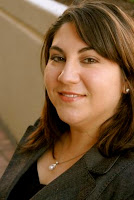by Amy Sananman, MPP, Executive Director

I started Groundswell Community Mural Project at 26 with no major connections or seed foundation money.
I wanted to bring professional artists, grassroots organizations, and youth together to create public art in under-represented neighborhoods. But while I saw the cross pollinating of these communities as a strength, from a fundraising perspective, it posed a major challenge that to some extent still exists today.
Groundswell Community Mural Project’s mission doesn’t sit squarely in established foundation program areas. This was particularly true over a decade ago. Arts funders didn’t see our work as “art” because of the community involvement. And the idea that art could play a part in youth or community development was not popular among funders who supported youth development and community organizing.
We had to be strategic about how we grew and managed our budget. With no seed money and a mission that fell outside of traditional foundation guidelines, we devised a number of creative fundraising strategies--strategies that have now left us in good standing and positioned us to hopefully withstand the current economic crisis.
We currently have a $650,000 budget. While we are not planning any major expansion in the next few years, we are not furloughing or laying off any staff (in fact, our staff is expanding). Here are some factors that we can attribute to our position today:
Diverse Funding Stream: Groundswell didn’t start with seed money or any major foundation connections; we patched together a lot of smaller grants. As the grants from these funders grew, we developed a very diverse funding stream (33 government and foundation sources comprise 50% of our income). Individual donations (via campaigns, mailings and events) brings in 15% of our budget for unrestricted purposes.
Integrated Earned Income: Groundswell partners with community groups to create murals with a social mission. Having youth create work that actually serves a real-life need for the community partner is inherent to our mission. We have integrated our program and business models. All community partners pay for a component of the budget. Certain projects we can only do if the funding is there. Having an earned income stream gives us another tool to confront the economic crisis. If and when we are in need of additional funds, we can always do more projects. Earned income comprises 30% of our budget.
Program Profitability: Groundswell’s budgets are fairly detailed and broken down by program. We project and track income and expenses by program . This helps us understand of the finances of each major program and determine which programs are operating at a profit or loss. That information provides us with a clear framework for strategically prioritizing programs and enlisting board and other key employees to improve finances. This is an emerging tool now called the Program Profitability Model (for more info: /www.nonprofitfinancefund.org/details.php?autoID=189#profitability)
Investing in Program: aka Staying Frugal with Operating Expenses. Groundswell began just by doing projects with very little to overhead. We didn’t have an office, a full-time staff, or insurance for many years. We are accustomed to doing a lot with a little and this has become part of the culture of the organization. Groundswell also utilizes the Americorps program to to expand our staff (we currently have one full-time and two part-time employees paid by AmeriCorp). The economic downturn has been terrible for young people entering the job market, but for non-profits hiring through Americorps, it can be a gold mine.
Living within Our Means and the Reserve Fund: Each year Groundswell projects its income and expenses so that each year’s budget balances without carrying any of the prior year fund balance over. We set aside our cumulative fund balance in a reserve fund.
While these strategies have put us in a good position, we never stop thinking about what could happen. Plan A, Bs and C contingencies are part of our on going conversation among senior staff and board. Like fundraising and development, organizational stability is a daily practice.

You can contact Amy at www.groundswellmural.org









